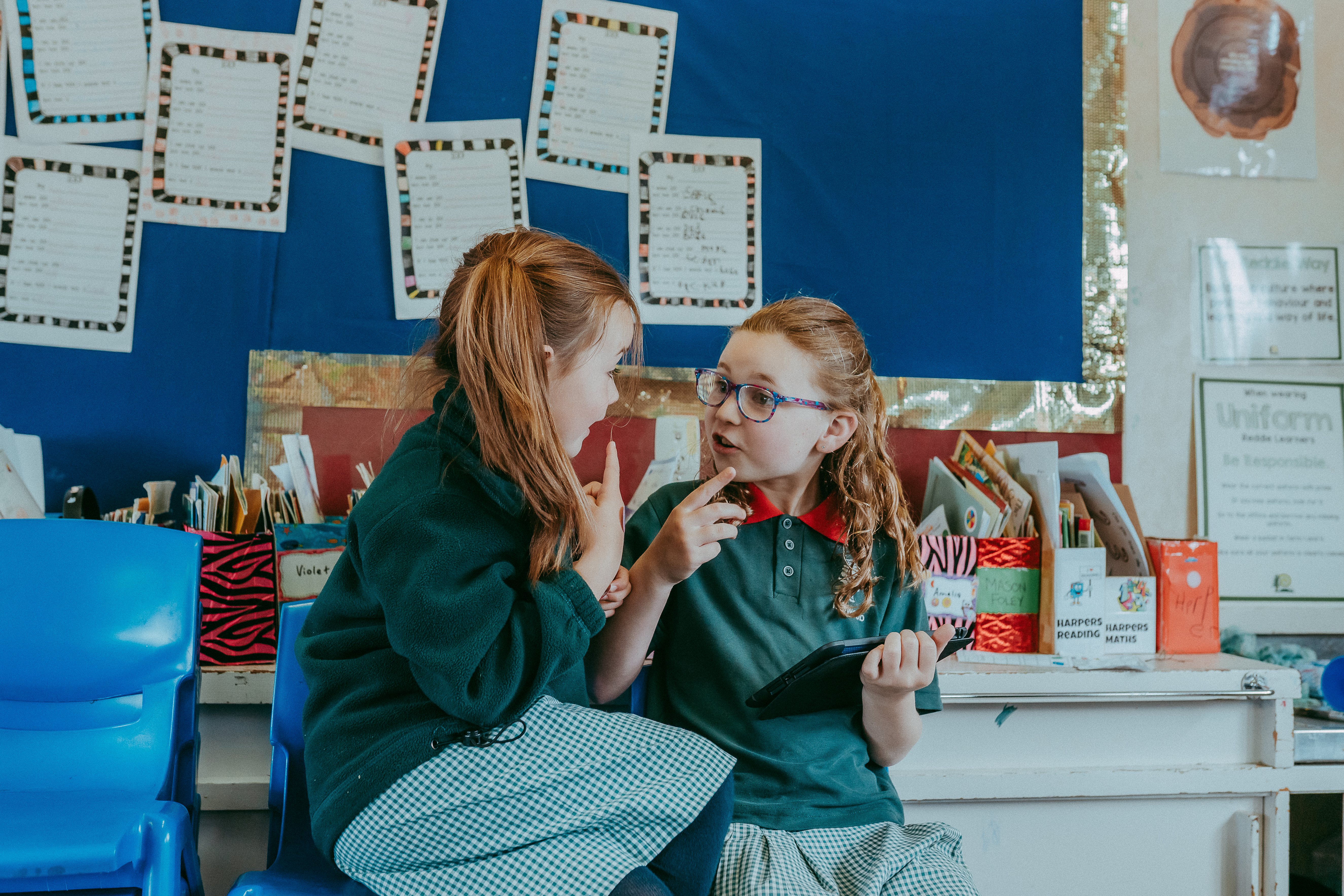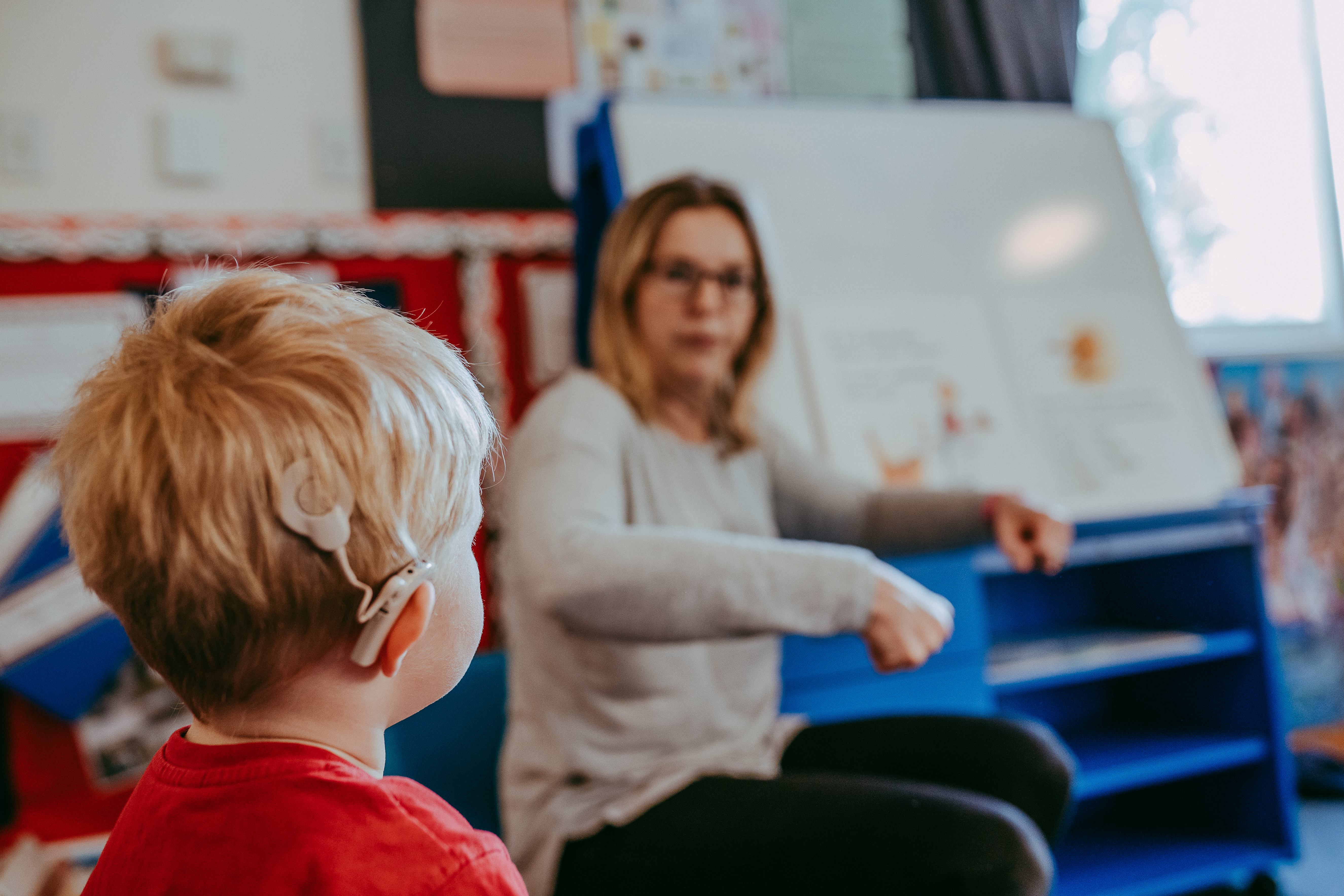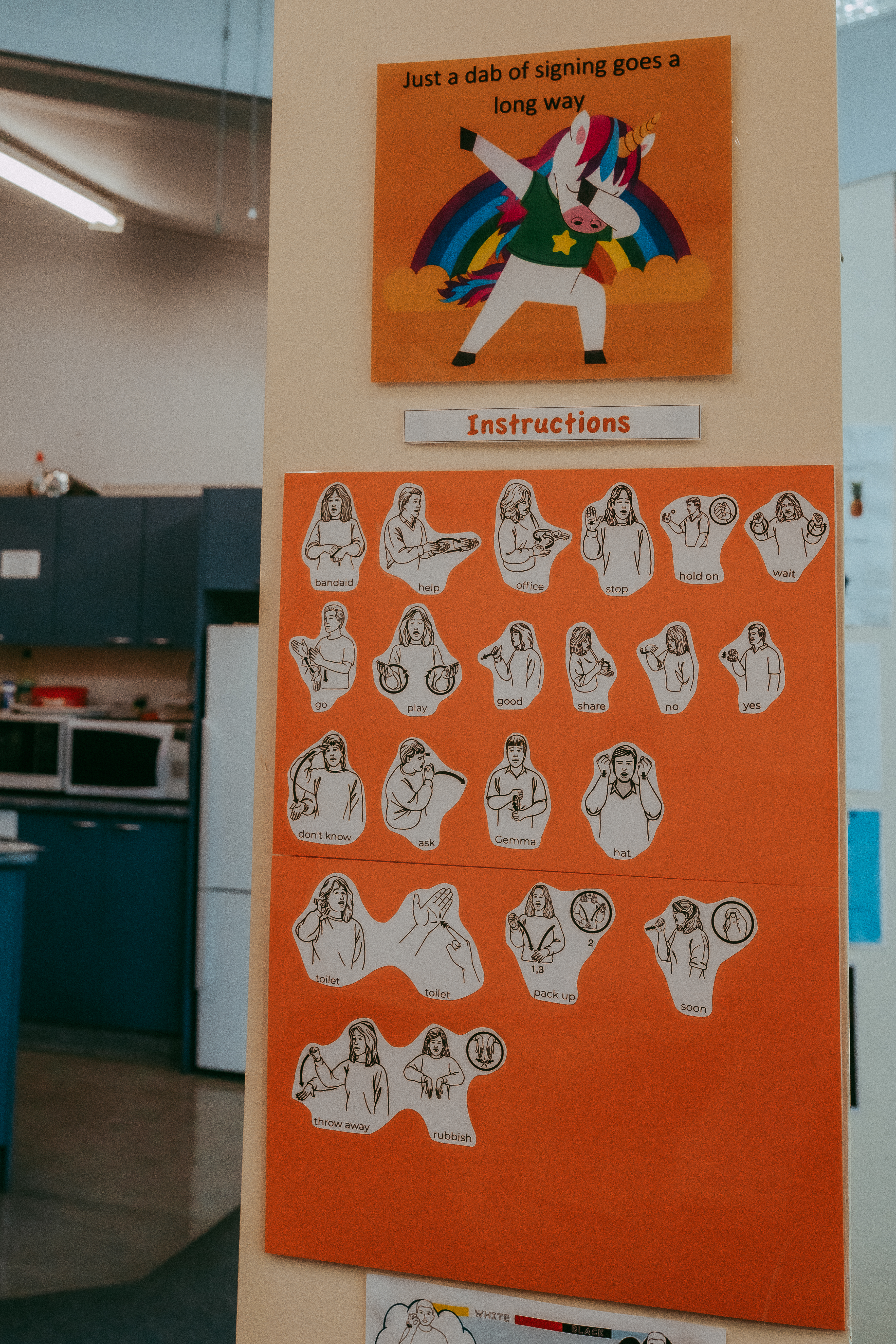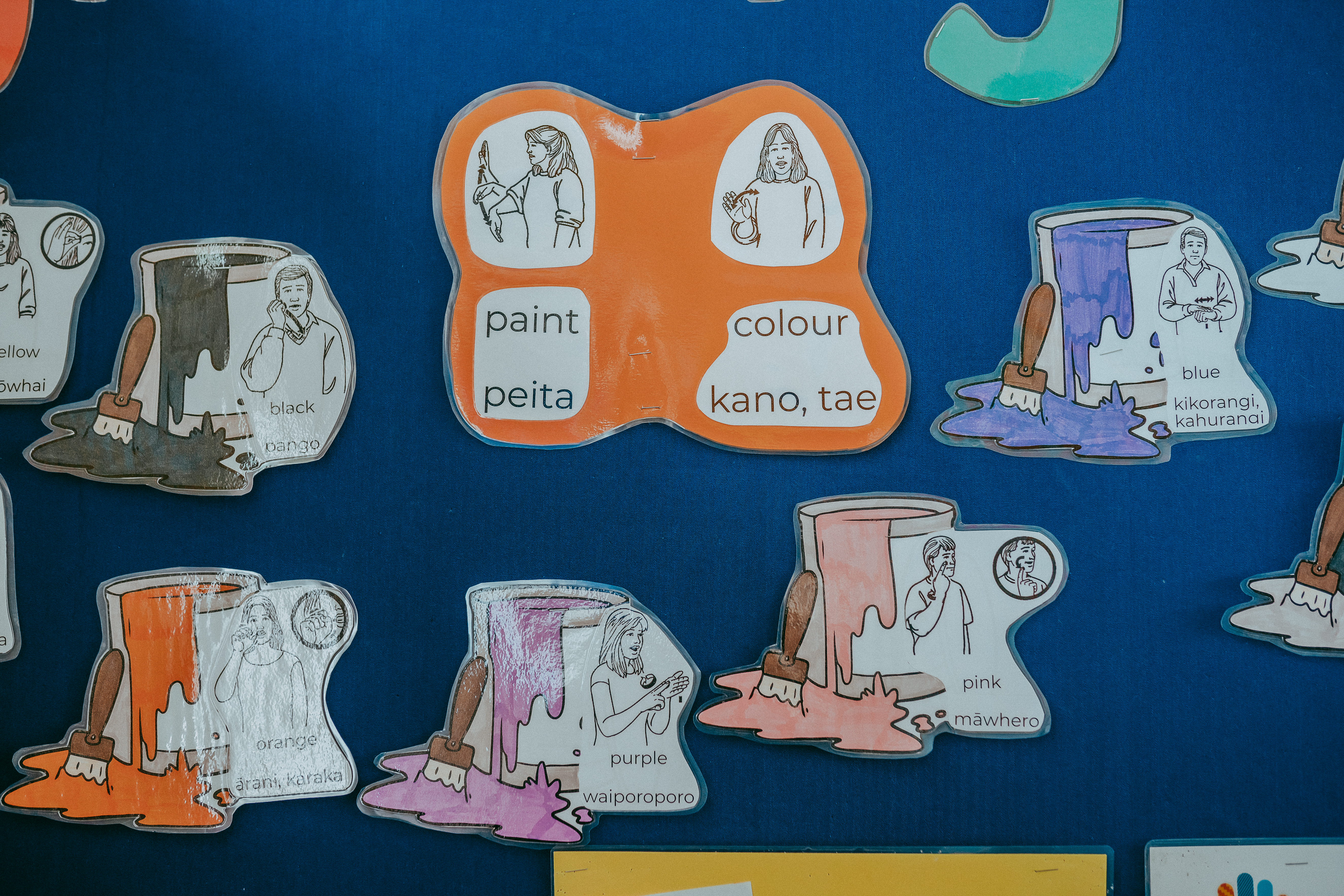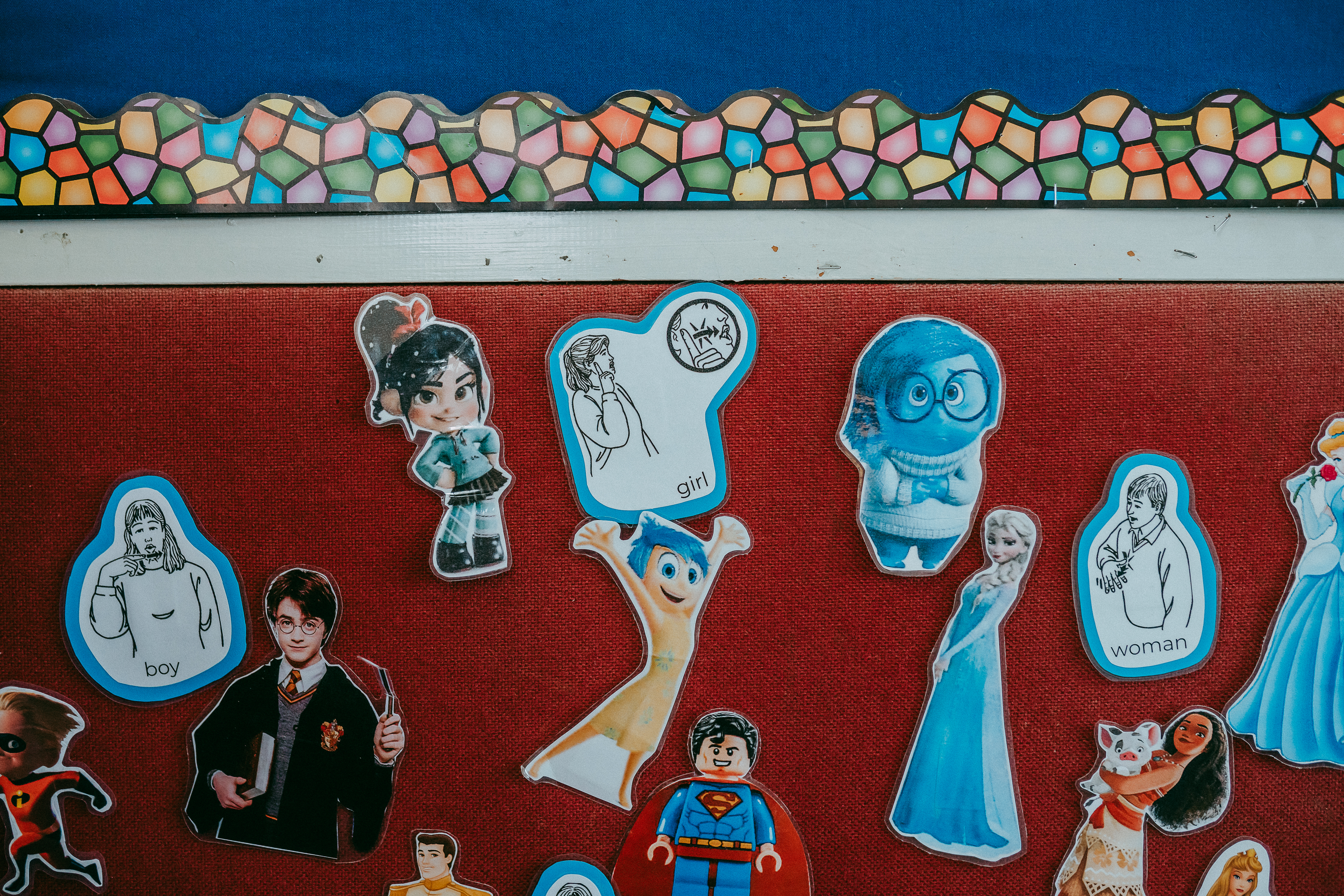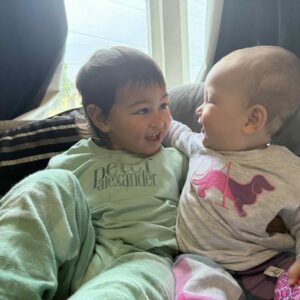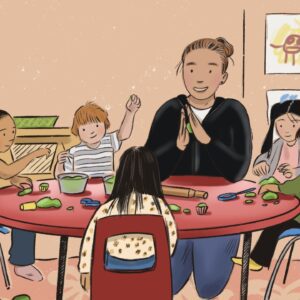Until a couple of years ago, Redwood School in Christchurch had little experience of teaching deaf students. But now, the students and teachers are enthusiastic about sign language, and seven-year-old Courtney Burcher has no problem communicating with her hearing friends.
Before Courtney started school, her New Entrant teacher and her teacher for the following year took lessons in New Zealand Sign Language (NZSL), as did other staff.
Principal John Stackhouse said they also spent a lot of time preparing the children and teaching them some sign language, especially those who would be in the same class as Courtney. He says it was important that they understood Courtney is the same as any other child, except that she is deaf.
“She has the same needs, same feelings and she would be learning very similar things. We made the point that she was just another kid,” he says.
Now in Year 3, Courtney is the fifth deaf generation in her family and communicates solely via NZSL. Her mum, Priscilla Buzzard, is Deaf and her dad, Ryan Burcher, is a CODA (a hearing Child of a Deaf Adult).
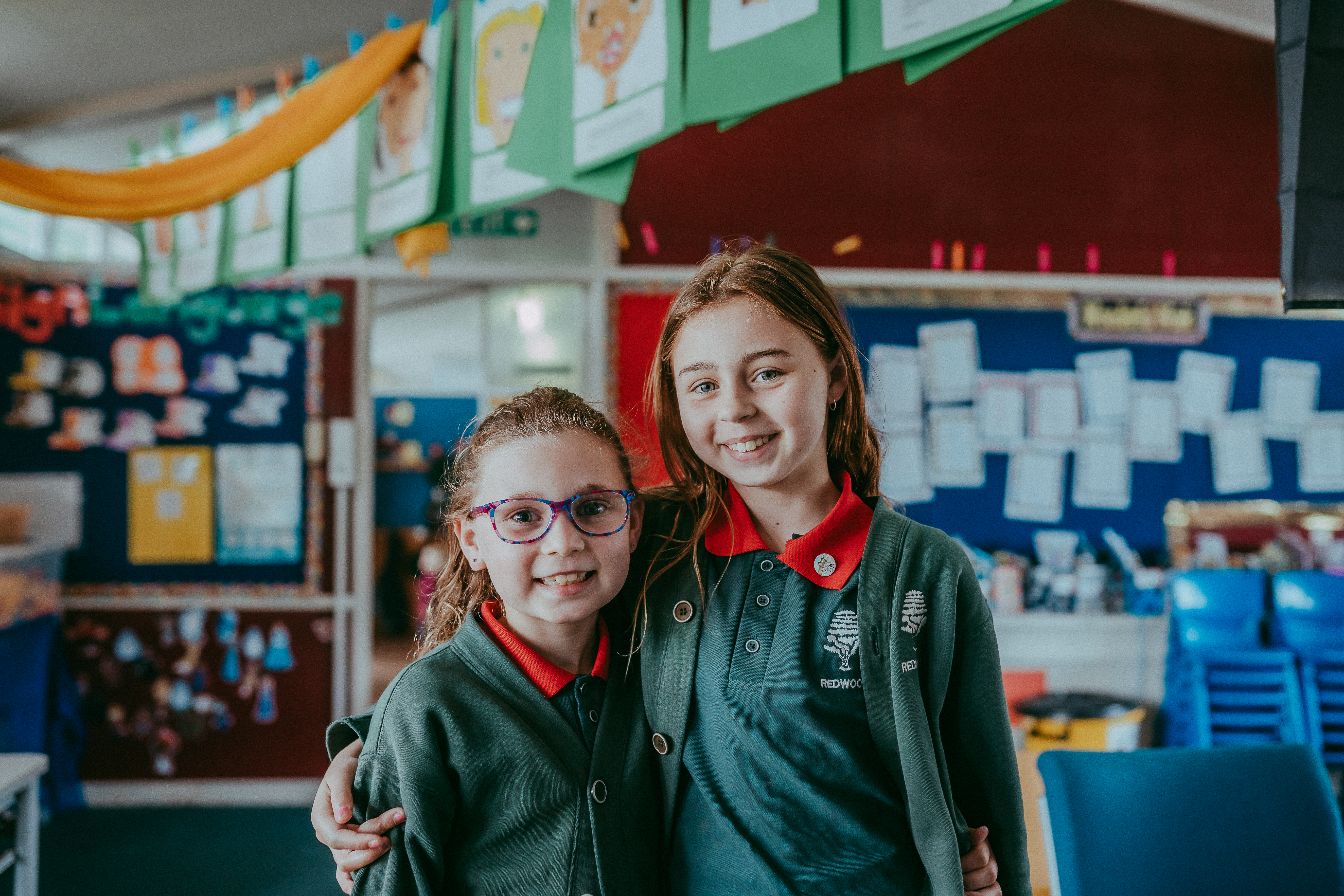
Through an NZSL interpreter, Buzzard says that when they were looking at local schools for their older hearing daughter, it was important to make sure that the school would be supportive of Courtney when her time came.
Buzzard’s memories of mainstream education are something she’d rather put behind her, but she says Courtney’s experience has been much more positive and they were very fortunate to find Redwood School.
“Maybe [it’s] to do with the other students being more understanding? For Courtney, other students realise that she’s deaf, she uses sign language, but that’s absolutely fine. I think in the old days that wasn’t so accepted, perhaps.”
“For Courtney, other students realise that she’s deaf, she uses sign language, but that’s absolutely fine. I think in the old days that wasn’t so accepted, perhaps.”
Priscilla Buzzard
Courtney is identified as having high learning needs because she communicates solely in NZSL, so she has a communication/education support worker, Gemma Williams, with her in class. Williams has the invaluable and quite rare ability to sign fluently.
Stackhouse says Williams is worth her weight in gold. “She’s just a brilliant staff member all round, really. From the point of view of flexibility, sense of humour and ability to work with both the Deaf community and the general school community, she’s one out of the bag.”
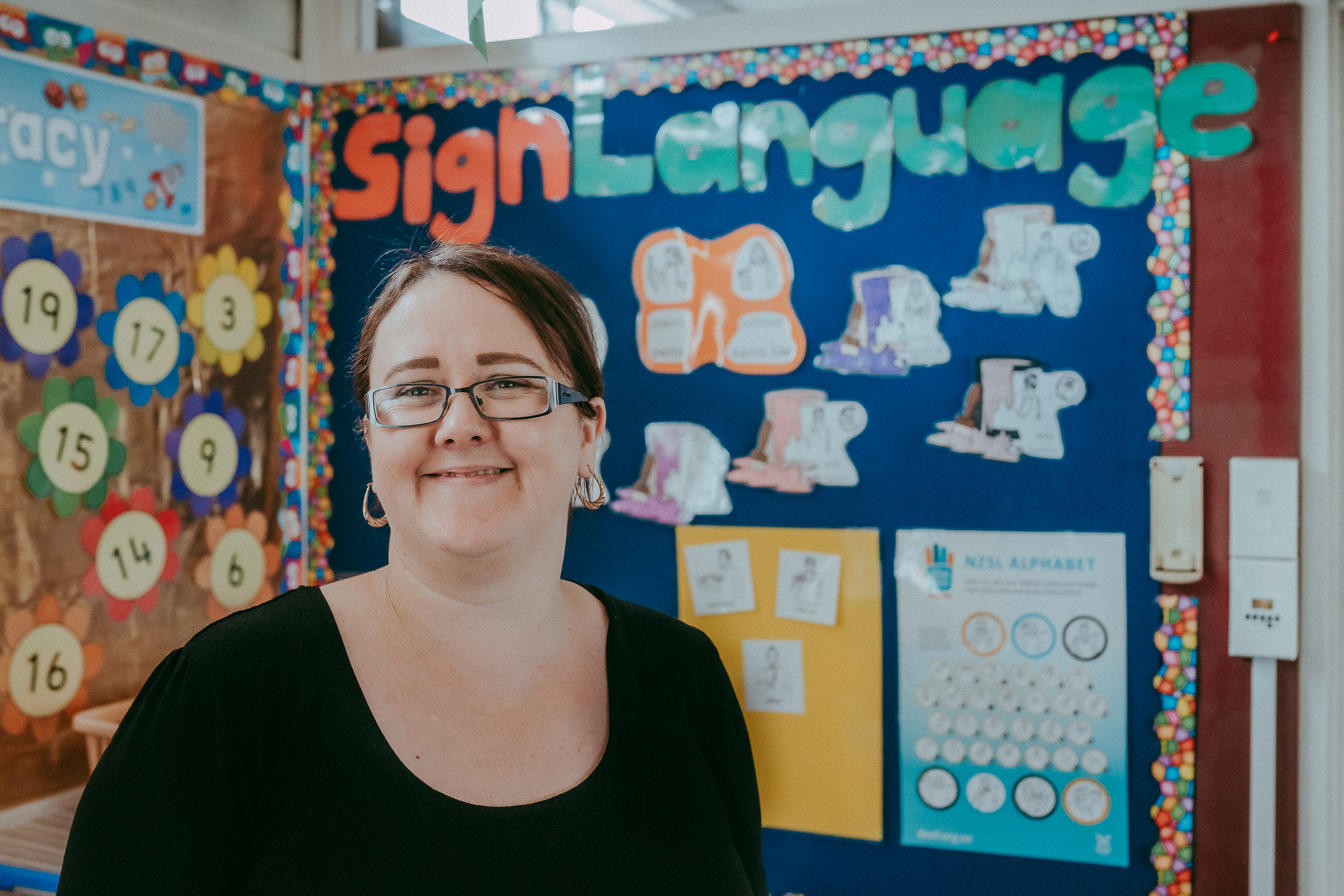
Along with Williams to support her learning and upskill her teacher and classmates in NZSL, Courtney also has five hours a week with Scott McDonnell, a Resource Teacher of the Deaf employed by van Asch Deaf Education Centre. Van Asch was established in Christchurch in 1880 and is the world’s oldest fully government-funded residential school for the Deaf.
McDonnell started his teaching career in mainstream schools, and it was 12 years before he had a deaf child in his class for the first time.
“I was kind of intrigued. How could I help this boy in my class? He wasn’t [a sign language user because he had a cochlear implant], but he needed adaptations to the curriculum,” he says.
McDonnell had been looking for a career change within education, and when a Resource Teacher of the Deaf encouraged him to apply for a study award, he took the plunge.

McDonnell spent three years teaching at van Asch’s unit at Wharenui School in Riccarton, where about 15 deaf children learn in two purpose-built classrooms, joining their mainstream peers for social and recreational events and some classes. These children tend to be profoundly deaf and may have an additional learning need such as autism or global developmental delay.
However, the majority of deaf and hard of hearing students at Wharenui are in mainstream classes, like Courtney, with varying levels of in-class and itinerant support, depending on the student.
“Wharenui School has an amazing atmosphere; it’s very multicultural and all the kids are amazing. If someone’s a bit different, they don’t see that as a problem, it’s just accepted,” says McDonnell.
These days, McDonnell will visit at least two schools each day. He says he can communicate effectively through sign language, but wouldn’t call himself fluent.
Sometimes he will do one-to-one teaching with a child, focussing on communication or literacy. He may also work with the classroom teacher, or take a group of hearing students so the classroom teacher can work one-on-one with the child.
“Sometimes it might be just giving examples on how to use the Roger Pen [a microphone that transmits the teacher’s voice directly to a hearing aid or cochlear implant] or adapting some curriculum [material]. I’m only there for a short time, so the more I can upskill the teacher on how they can help that child, the more likely I will be successful. I’m there to help the teachers, not just the students,” he says.
“I’m only there for a short time, so the more I can upskill the teacher on how they can help that child, the more likely I will be successful. I’m there to help the teachers, not just the students.”
Scott McDonnell
McDonnell has been assisting Courtney since 2019 and gives her support worker advice on making resources that will help Courtney.
“Her first language – NZSL – is quite a rich language, but she doesn’t have as much exposure to English,” he says. “Even when it comes to writing, she’ll have a lot of visual pictures to prompt her. Or for retelling a reading book, I’ll photocopy the pictures and she’ll have to put them in the right order and explain to me what’s going on.”

An NZSL dictionary app that contains diagrams and videos for more than 4,000 words and phrases is an invaluable resource for Courtney and those teaching her.
Each year, McDonnell assists about one deaf or hard of hearing child with the transition to school.
“One of my students that I have on my caseload, with bilateral hearing aids, was at an early childhood centre (ECE), just an everyday one. I got given more hours with him when he transitioned to New Entrants in a mainstream school, and I helped the teacher in the class know how to help this particular boy. Now, he’s one of the highest-succeeding students in the class, reading and writing, maths – a real success story,” he says.
McDonnell says getting in early with support really pays dividends for the child, as well as their hearing classmates. “For the kids in the class who aren’t deaf, they’re going to get to learn [NZSL], they get to understand some of the Deaf culture ways, like getting the teacher’s attention [using] body language and things like that,” he says.
“For the kids in the class who aren’t deaf, they’re going to get to learn [NZSL], they get to understand some of the Deaf culture ways …”
Scott McDonnell
“Many adaptions that support the deaf child also help hearing students, such as [using] a visual timetable.”
This service for deaf children and their families is centred at van Asch Deaf Education Centre in Christchurch and Kelston Deaf Education Centre in Auckland. Van Asch provides services for the South Island and lower North Island, and Kelston covers from Taupō north, although a merger is underway that will result in a single nationwide service from 20 July 2020. The centres already have a combined Board of Trustees and work closely together to support more than 2,800 deaf and hard of hearing children, of whom about 1,100 are currently covered by van Asch.1

Like Courtney, some of those children will start their education journey at van Asch’s Early Intervention Centre (EIC) in Sumner, which is a licensed ECE centre. Head teacher Helen King says an important part of the service is supporting parents, many of whom had no experience of the Deaf community before having their own deaf child. About 95 percent of deaf children are born to hearing parents.
The EIC currently has 17 deaf or hard of hearing children enrolled and about a quarter of them have one or both parents who are also deaf – a much higher proportion than might usually be expected.
Local families usually attend the EIC once a week and hearing siblings are also welcome. The centre also runs sessions for CODAs, who attend with their parents or caregivers.
King says the parent-to-parent support is important to the families. The parents are required to stay so they can connect and join in story and music mat times. They also make use of sessions with NZSL tutors and other experts, such as audiologists.
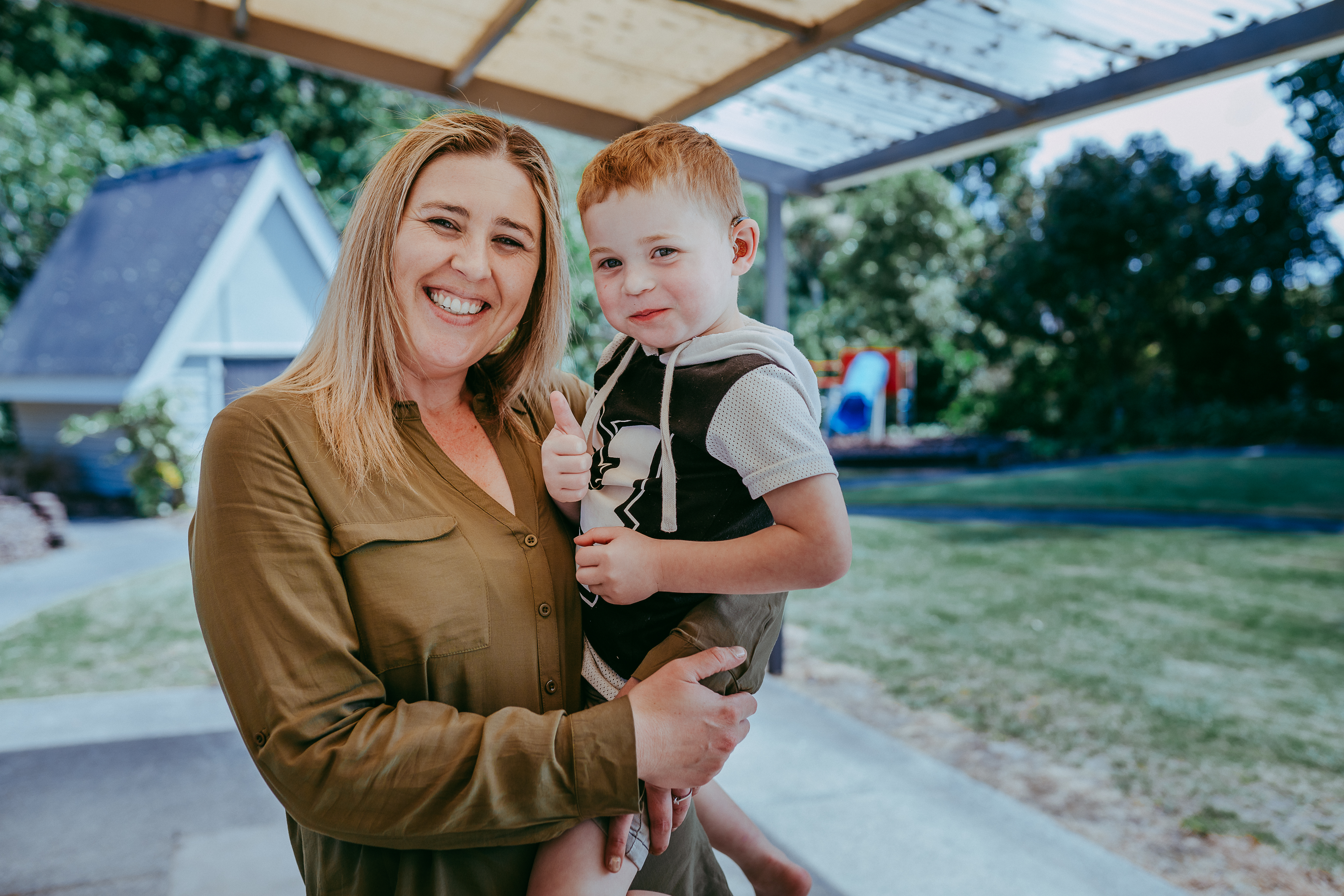
Families attending the EIC weekly may also have an individual session with a Teacher of the Deaf or a speech language therapist focussed on developing communication strategies that can be followed up at home.
Most of the families also access First Signs, a service provided by Deaf Aotearoa in which NZSL tutors go into the home every few weeks to support hearing families to learn sign language.
By the age of three, children usually have an Individual Plan, which is put together by ministry-employed Advisors on Deaf Children. Advisors on Deaf Children are Teachers of the Deaf or speech language therapists who have undertaken additional qualifications, such as a master’s degree in Deaf Education. They work with families and specialists to assist children from birth to Year 3 at school. The majority of children at the van Asch EIC also attend a mainstream ECE centre. Once a child turns three, if they communicate solely by NZSL, they may be eligible for support from a Resource Teacher of the Deaf at their ECE centre.
All families throughout New Zealand get support from Advisors on Deaf Children in their own mainstream ECEs and in the home. Regional families can also attend residential sessions at Sumner twice before starting school. While staying onsite for four days at a time, they receive input from an audiologist, a speech language therapist, a Deaf NZSL tutor and an early literacy specialist. Van Asch runs 10 residential sessions each year, for up to three families per visit. It also runs eight four-day courses for school-aged children and their families.
King says one of the things they do at the EIC is educate parents about their child’s learning style, in terms of access to learning either spoken or signed languages, so they can advocate for and explain the types of adaptations and services that might be needed. Teachers and the speech language therapist at the centre help advisors with preparing children and parents for the move to school.
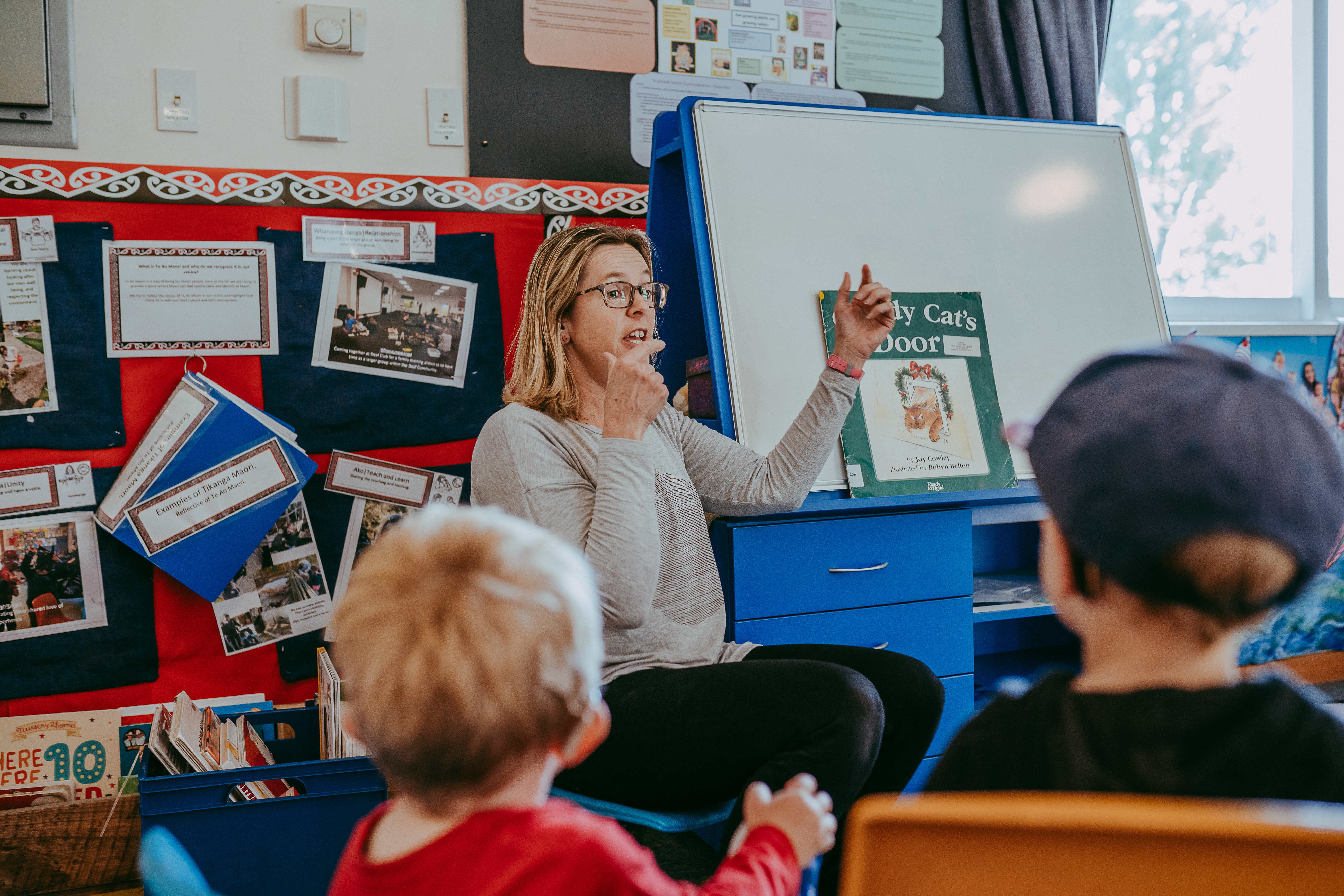
There are many considerations for families when choosing a school, including wanting all of their children together. King assures parents that they can always change to or from mainstream learning if their first choice doesn’t work well. “Learning pathways are flexible and school enrolment can be reviewed at any time,” she says. Outside Christchurch and Auckland, though, mainstream schooling is the only option.
The level of support both in ECE and at school varies depending on the child. It can be advice and guidance or scaffolded teaching in relation to classroom learning.
King says most children who are eligible have received cochlear implants as babies and the majority who come through the centre were implanted at nine to 10 months old.
“But that’s still nine to 10 months they haven’t been listening, so [they’re] still learning to make use of the listening. But we do have the range of students who have mild to profound hearing loss,” she says. “We offer to all students a Deaf Bilingual approach. This means we switch between spoken and signed languages during our programme.”
“We offer to all students a Deaf Bilingual approach. This means we
Helen King
switch between spoken and signed languages during our programme.”
Cochlear implants have been a contentious issue in the Deaf community in the past, as some felt it was an assault on their culture, but that attitude is changing.
Dr David McKee is Research Director of the Deaf Studies Research Unit and Senior Lecturer in Applied Linguistics at Victoria University of Wellington. As a Deaf person, he observes that cochlear implants are becoming the technological norm, but Deaf people are often concerned about how implant information is presented to parents.
“If I had a deaf child myself, I might, for example, choose to give that child a cochlear implant if I decided it would be useful for them to have the option to be able to hear and have spoken language. But they’d still have sign language and Deaf culture [from me],” he says, through an NZSL interpreter. “In the past, maybe 10 or 20 years ago, I might have been completely resistant, but I think people are more open now.”
McKee says that with cochlear implants comes a very strong focus on the development of speech. “That is natural and I understand that, but sometimes it’s to the exclusion of sign language, with the kind of approach that if the child doesn’t develop good speech or auditory language skills, then use sign language as a last resort.
“But what Deaf people would say is why not give the child bilingualism from the beginning, have access to both speech and sign language? If the child later feels they don’t need sign language, or they don’t want to use it, then that’s their choice. But at the moment, that choice is in the hands of parents who may not have the full spectrum of information,” he says.
McKee sees first year university students with cochlear implants who are learning NZSL for the first time, and he senses that some of them wish they had had that opportunity earlier in life.
“There are, of course, people with cochlear implants for whom it is really successful and they function really well in spoken language, but not all,” he says.
McKee says that almost every child with profound hearing loss will be encouraged to have a cochlear implant, and he estimates that about 95 percent of parents choose that option. He believes the other five percent will be made up of Deaf parents who choose not to, or situations where the child has other physical issues or learning disabilities that might make an implant unsuccessful. The widespread use of cochlear implants and other hearing aids means there are far fewer profoundly deaf children than in the past.
McKee says that in the past, all deaf children would attend a School for the Deaf, rather than mainstream. “Unfortunately, during that era, deaf children were not allowed to use sign language in the classroom, so that’s part of our history – they had to use speech in the classroom, but signed surreptitiously out of the classroom,” he says.
“In the 1980s, a signing system was introduced into schools, and in the past 20 years there has been more and more acceptance of NZSL – but also deaf children have mostly been enrolled in mainstream schools, so the Deaf schools have declined.”
McKee says the Deaf community has always strongly advocated for having groups of deaf children together in schools to socialise and for more natural sign language transmission.
McKee says the Deaf community has always strongly advocated for having groups of deaf children together in schools to socialise and for more natural sign language transmission. He says a lot of Deaf adults are concerned that there are many deaf children in mainstream schools without a sign language environment or access to qualified interpreters. In most cases, teacher aides fulfil an interpreting role, despite no formal training.
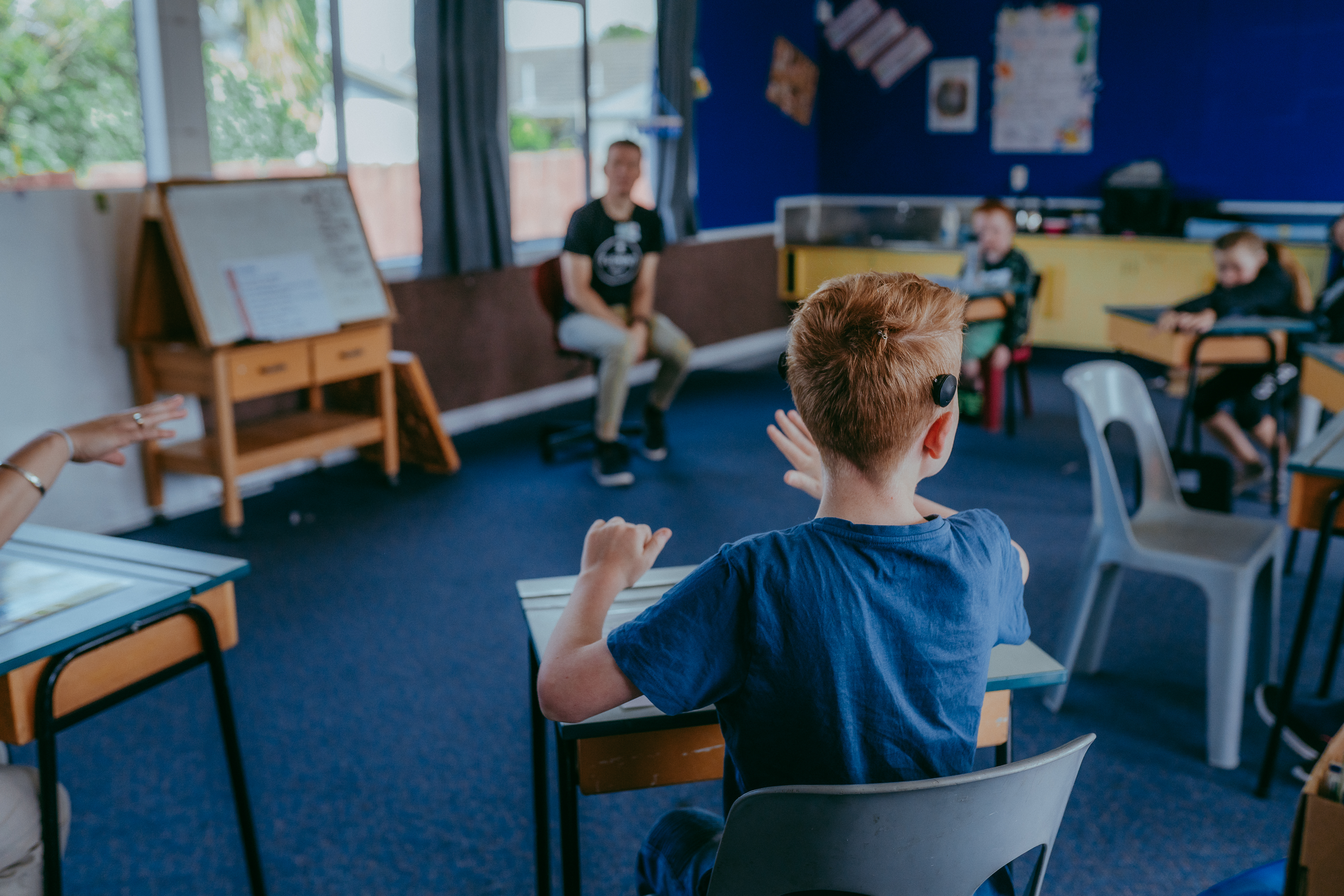
A pilot programme at Redwood School that is connecting Courtney with other deaf students from around the city may eventually address some of those concerns.
Working in partnership with van Asch, the school has established an NZSL hub for deaf and hard of hearing students. Every second Friday for just over a year, up to nine students have travelled to Redwood School from all over Christchurch to spend the day together with specialist van Asch teachers. They interact with the other Redwood students at break times.
NZSL hubs are increasingly being set up throughout New Zealand by the Deaf Education Centres in partnership with local schools, meaning deaf students can come together regularly.
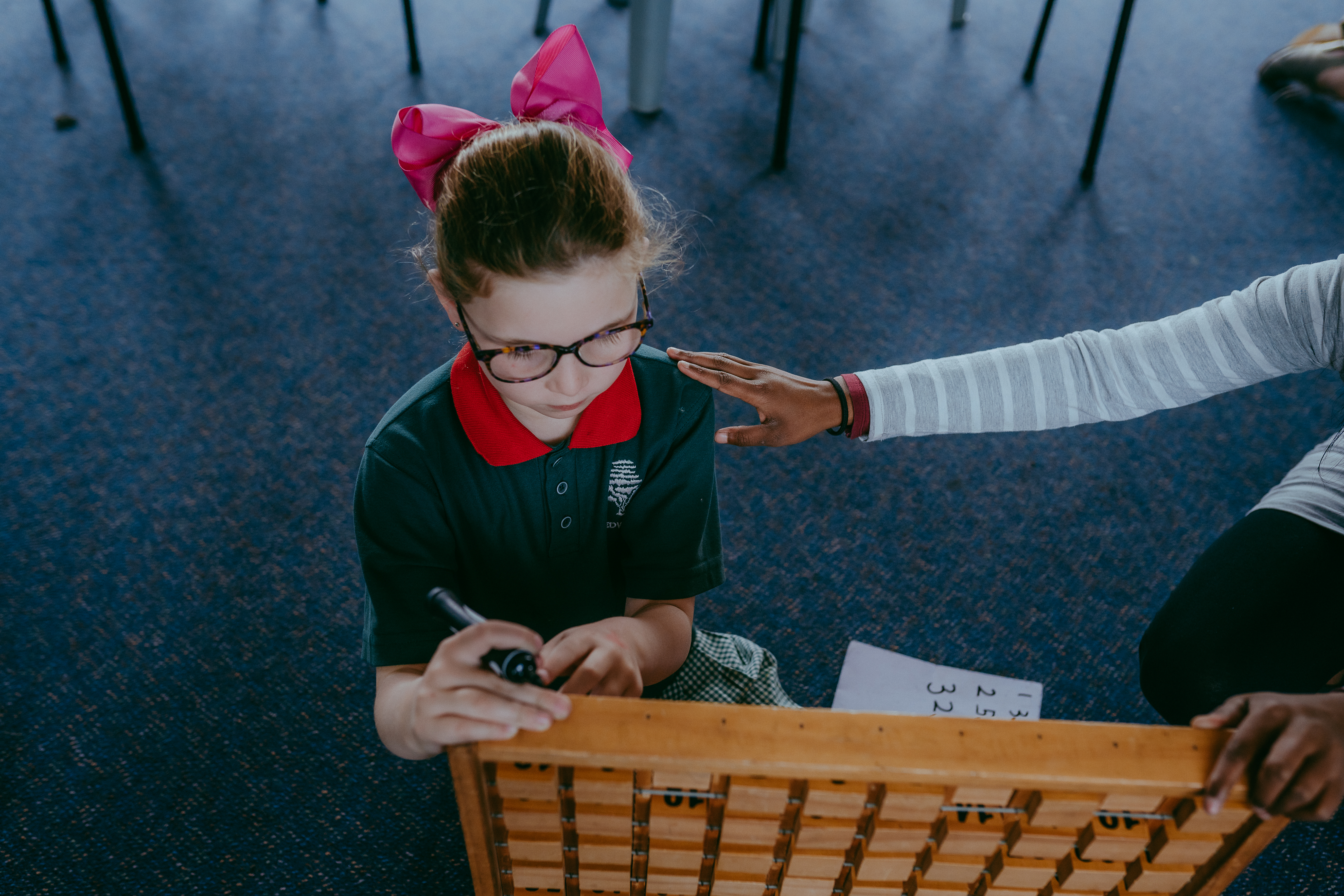
Stackhouse says the goal is that deaf tamariki could be permanently enrolled at a hub school and become more connected with each other through mutual use of NZSL, with more ready access to learning support onsite. They would have mainstream time but interact regularly with peers who are also deaf.
It’s a goal that will enable Courtney and other deaf students to socialise much more with each other and learn about Deaf culture and Deaf history.
“Feedback from parents of deaf tamariki has been that having them using [NZSL] in our current hub has grown their confidence and security in who they are,” says Stackhouse.
If you ask Courtney whether she enjoys getting together with her friends at the hub, you’ll get a big smile and an emphatic nod.
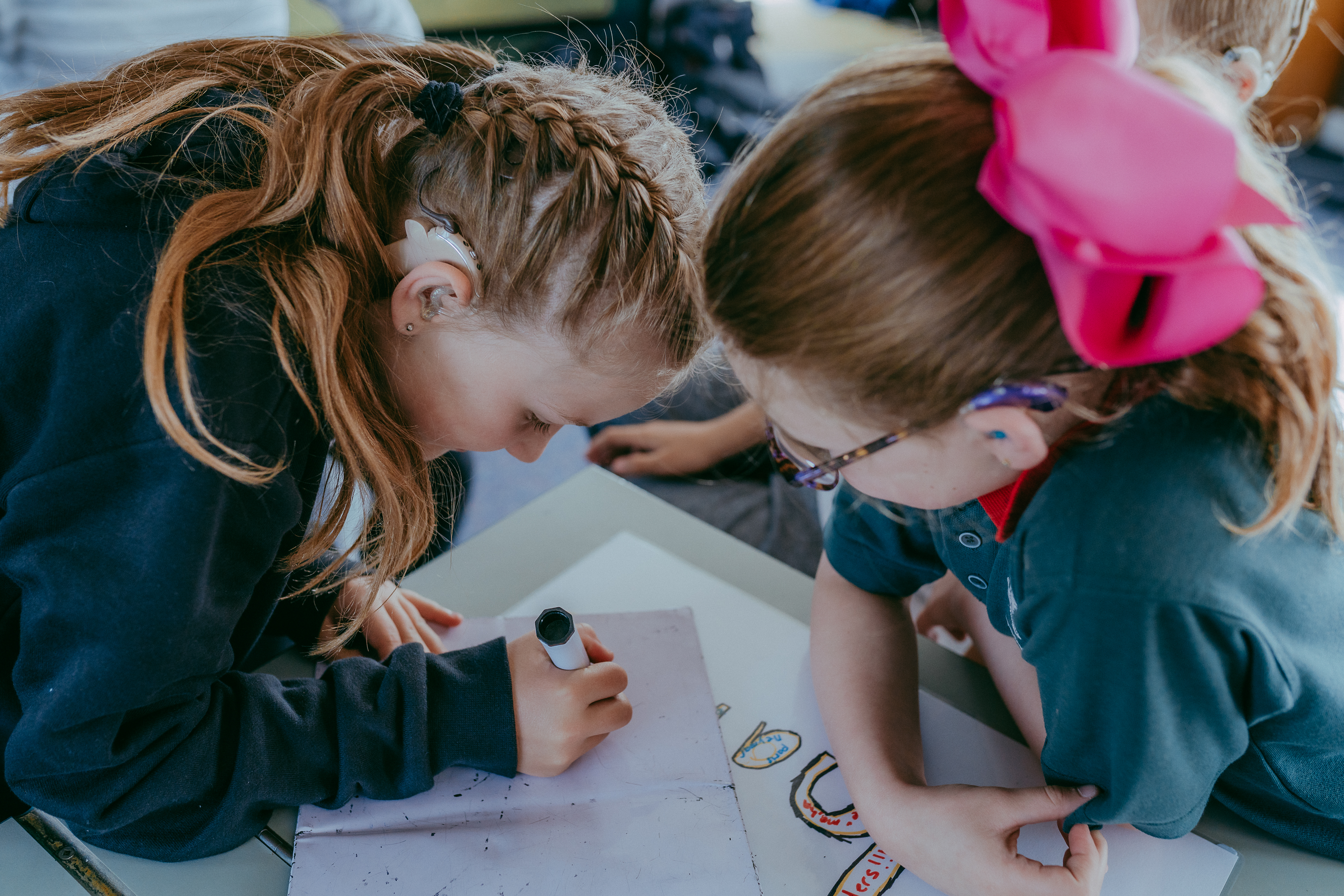
Deaf language and culture
New Zealand Sign Language (NZSL) is a unique language, with a vocabulary that includes Māori concepts, such as marae and tangi. It has signs for place names, such as “mudpools” for Rotorua, and “W” with “windy breeze” for Wellington.
NZSL became an official language of New Zealand in 2006, and in the 2018 Census there were 22,986 people (or 0.5 percent) who reported the ability to have a conversation in NZSL.
Like British Sign Language (BSL) and Australian Sign Language (Auslan), NZSL has its roots in a deaf sign language used in Britain during the 19th century and uses the same two-handed manual alphabet. Today, BSL has 62.5 percent similarity to the signs of NZSL. American Sign Language, however, has its roots in French Sign Language and has only a third of signs in common with NZSL.
NZSL also uses lip-patterns in conjunction with signs, reflecting New Zealand’s history of oralist education. For a century, deaf students were taught to communicate only through oral language by using lip reading, speech and mimicking the mouth shapes and breathing patterns of speech.
Students of the first School for the Deaf, which eventually became van Asch Deaf Education, were not allowed to sign and had to do it in secret until 1979.
In that year, the school introduced a “use all communication modes” philosophy known as Total Communication, but the signing adopted was an artificial system, using mostly Auslan signs, with some local deaf signs and others that were created to represent the words and grammar of English. NZSL wasn’t adopted for teaching until 1994.
In 1992, Dr Rachel McKee (who is hearing) and Dr David McKee (who is Deaf ) established and taught New Zealand’s first full-time interpreter training programme, at what is now the Auckland University of Technology.
Both are now based at Victoria University of Wellington’s School of Linguistics and Applied Language Studies, and David McKee has a particular interest in comparative studies of sign languages.
He explains that two Deaf people from countries with different signed languages would be able to communicate more effectively than two people using different spoken languages. “Because there are more visual elements in sign language, there’s more use of body language and also more common experience in mutual understanding between Deaf people,” he says. “Say you have a Deaf German person who went to China – they would be able to communicate at a basic level more effectively than two hearing people. They could kind of cobble together an international sign. It’s not a ‘sign language’ as such, not a formal language, but a way of communicating across languages.”
David McKee says that spoken language is based on sound and a sequence of words, with the grammar influenced by that modality. “Sign language works in a visual modality; it’s three-dimensional and doesn’t really conform to the structure of the use of sounds. It uses elements like space and movement and facial expressions,” he says.
“Sign language works in a visual modality; it’s three-dimensional and doesn’t really conform to the structure of the use of sounds.”
David McKee
Rachel McKee is qualified as an interpreter of New Zealand and American Sign Languages, and played a key role in establishing the interpreter profession in New Zealand.
While she says no culture can really be summarised, Deaf culture is mainly about having a visual orientation in the world. “Deaf communication behaviour is obviously quite different, in that it’s quite physical and has emphasis on face-to-face communication and use of the body. Waving to get attention, using visual signals. It’s mannerisms, it’s just a Deaf presence, it’s very different,” she says.
She says Deaf people consider sign language as an important cultural resource because it’s how they learn, get information and express themselves. “I think it’s a sense of common identity. People really value the collective, being connected with other Deaf people.”
A note about the capitalisation of the word Deaf: Generally, “deaf” is used when referring to a hearing-loss condition and “Deaf” refers to the Deaf community and its members.
The New Zealand Sign Language Bill (2004) states: “The capitalised ‘D’ in ‘Deaf’ is used internationally to denote a distinct linguistic and cultural group of people who are deaf and who use sign language as their first or preferred language, and includes those deaf people who identify with that group and with Deaf culture.”
1. Van Asch provided this statement: “Since 2012, many efforts have been made to align the work of the two Deaf Education Centres to provide a nationally consistent schooling and support programme. [In 2020], the merger of both Centres will herald an exciting era of change in Deaf Education, with the opportunity to provide services that allow every Deaf and Hard of Hearing learner to Belong, Grow, Excel and Choose.”
